The following list gives some details on books and special issues related to elemental speciation (analysis) published since 2016. The list is neither exhaustive nor do we guarantee that all books are still available.
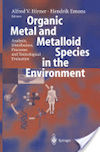
Organic Metal and Metalloid Species in the Environment: Analysis, Distribution, Processes and Toxicological Evaluation
Alfred V. Hirner, Hendrik Emons
Springer Science & Business Media, 14.03.2013 - 328 Seiten
Subsequent
to the profiling of organometal(loid) compounds in important
biogeogenic and anthropogenic deposits, the importance of this class of
compounds for human health are evaluated by the analysis of both
physicochemical and biological formation, distribution and
transformation processes. Multidisciplinary articles written by experts
from disciplines as diverse as biogeochemistry, ecotoxicology,
analytical chemistry, microbiology and genetics estimate the global
levels of biogeogenic and anthropogenic emissions of organometal(loid)
compounds, and thus obtain an insight to processes which influence the
genesis, as well as the distribution and stability of organometal(loid)
species and their interaction with each other and other matrix
compounds. The authors evaluate various environmentally relevant sources
from a toxicological point of view, in order to identify potential "hot
spots" of organometal(loid)s, which can negatively influence ecosystems
and human health.
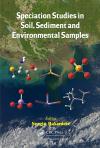
Speciation Studies in Soil, Sediment and Environmental Samples
Sezgin Bakirdere
CRC Press , 2013, 612 Pages, ISBN 9781466594845
Features
Includes speciation studies of different elements in a variety of environmental matrices
Describes different extraction, separation, and detection techniques used in speciation analysis
Useful for environmental, food, and soil scientists
Summary
Recent developments clearly indicate that speciation studies in biological and environmental matrices are much more important than the total element determination due to the tremendous difference in bioavailability and toxicity of various chemical forms of a particular element. Different separation-detection techniques and hyphenated systems — each with its own advantages and disadvantages with respect to precision, sensitivity and detection limit—have been developed for the identification and quantification of the species present in systems at ultra-trace levels. This book aims to evaluate the speciation analysis in depth and present a comprehensive review of state-of-the-art analytical approaches used for the speciation of elements in environmental samples.
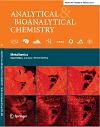 Topical Collection Metallomics
Topical Collection MetallomicsGuest Editors:
Uwe Karst,
Michael SperlingAnalytical and Bioanalytical Chemistry, 405/6, February 2013 The purpose of this special issue is to cover the broad range of topics from the life sciences related to the new field of metallomics. A two-digit number of high-quality articles discusses such questions as the metabolism of metals, the involvement of metal species in dysfunction and diseases, the development of metallodrugs and characterization of their activity, and the involvement of metal species in gene expression and regulation. An equally broad range of analytical techniques has been used to determine the interactions of metal species and biomolecules to provide the respective answers. These techniques include spectroscopic methods (Mossbauer spectroscopy, NMR, FTIR, EPR), techniques hyphenated with mass spectrometric detection (LC-ICP-MS, CE-ICP-MS, LC-ESI-MS), imaging techniques (µ-XRF, SR-XRF, XANES, X-ray tomography, SIMS, LA-ICP-MS, fluorescence microscopy), separation techniques (HPLC, PAGE), and, last but not least, bioanalytical techniques, for example PCR and gene-expression analysis.
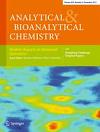 Themed issue: Modern Aspects of Elemental SpeciationThorsten Hoffmann
Themed issue: Modern Aspects of Elemental SpeciationThorsten Hoffmann,
Klaus Gustav Heumann (Eds.)
Analytical and Bioanalytical Chemistry, 404/8, 2012This issue of ABC contains selected research contributions from the last period of a PhD graduate school on ‘Trace Analysis of Elemental Species: Development of Methods and Applications’, which was established at Johannes Gutenberg University Mainz in Germany. This graduate school was continuously supported for nine years by the German Research Foundation (Deutsche Forschungsgemeinschaft, DFG) from October 2002 until September 2011, and research groups from different disciplines (analytical, atmospheric and nuclear chemistry; biology; geosciences; medicine and physics) at the University of Mainz participated. In addition, there was much cooperation with groups outside Mainz, for example with those from the University of Münster and the University of Aberdeen, which both also contributed to this special issue.
 Handbook of Hyphenated ICP-MS Applications, 2nd edition
Handbook of Hyphenated ICP-MS Applications, 2nd editionAgilent Technologies, 2012
Foreword by Michael Sperling
The first edition of Agilent's Speciation Handbook already topped the list in Agilent downloads. Now, with more than 130 pages of authoritative information, the Agilent Handbook of Hyphenated ICP-MS Applications, 2nd edition, provides an overview to speciation analysis by ICP-MS techniques and gives access to a broad collection of hyphenated ICP-MS applications.
 Request your printed copy for free
Request your printed copy for free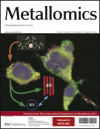 Themed Issue: Third International Symposium on Metallomics 2011Michael Sperling
Themed Issue: Third International Symposium on Metallomics 2011Michael Sperling (Editorial)
Metallomics, 3/12, 2011The
Third International Symposium on Metallomics was held in Münster (Germany) from June 15 to June 18, 2011. With 39 countries represented, it was a truly international meeting, and the impressive number of more than 320 participants underlined the growing interest in this emerging research area. The collection of papers within this special issue tries to capture the spirit of this event and gives an impression of the different aspects of metallomics discussed during the symposium: development and exploration of tools for metallomics research such as PAGE/LA-ICP-MS, the use of the tools to determine metal(loid) species in cells and tissues, the use of metals for labeling of biomolecules, the study of the role of metals for the structure of biomolecules, the investigation of the binding sites of metals to biomolecules, the bioaccumulation of metals in biological systems, the mechanisms of metal toxicity and the activity of metallodrugs.
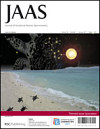 Themed Issue: Speciation
Themed Issue: Speciation
Michael Sperling and
Joanna Szpunar (Guest editors)
J. Anal. At. Spectrom., 26/1, 2011
27 contributions—including 3 reviews and 21 original research papers—from the university laboratories and research institutes in Europe and Asia provide a wide scope of the studies of chemical forms of elements in the environment and biology. Despite its mature age, speciation continues to be an attractive research area facing on a number of challenges being successfully addressed by the creativity of researchers assisted by the progress in instrumentation, especially in mass spectrometry and coupled techniques.
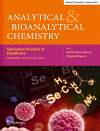 Themed Issue: Speciation analysis in healthcare
Themed Issue: Speciation analysis in healthcare
H. Goenaga-Infante (ed.)
Anal. Bioanal. Chem., 399/5, 2011
This special issue comprises a review and a feature article, four original papers and a technical note. Together, these highlight the complexity and role of speciation measurements in providing information relevant to food and environmental safety and compound-specific metabolism. The articles cover a range of elemental species of different types (e.g. stable arsenosugars and labile manganese complexes) and samples of different complexity (e.g. urine, welding aerosols and cells). It is hoped that this collection of excellent papers will help to broaden the horizons for developments in this field.
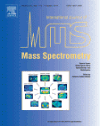 Themed Issue: Bioinorganic Mass Spectrometry and Metallomics
Themed Issue: Bioinorganic Mass Spectrometry and Metallomics
Johanna Sabine Becker (ed.)
International Journal of Mass Spectrometry. 307/1-3, 2011
Mass spectrometry is one of the most important analytical techniques used today for the determination of element concentration, for surface and isotope analysis, and for structural analysis of organic and bio- organic compounds due to its very high sensitivity and low detection limits. The importance of bioinorganic mass spectrometry has increased rapidly in the last few years due to a significant improvement of analytical techniques with respect to sensitivity, dynamic range, detection limits, precision and accuracy. This special issue of the International Journal of Mass Spectrometry concerns the growing significance of bioinorganic mass spectrometry, elemental imaging and metallomics studies with 32 scientific contributions (including 8 invited reviews) of more than hundred authors from 14 nations: Austria, Belgium, Brazil, Canada, China, France, Germany, Israel, Monaco, Spain, Switzerland, Thailand, United Kingdom and USA.
More books
last time modified: July 4, 2015